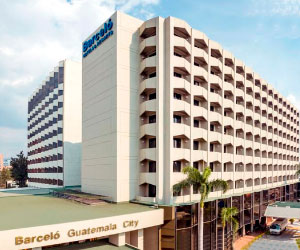Remittances to Central America’s so-called ‘northern triangle’ (El Salvador, Guatemala and Honduras) are on track to set a new record, breaking the one set in 2021.
From January to September, remittances to the three countries totaled $25.49 billion, an increase of 16.5%, or $3.61 billion more than the figures between the same period of last year. The figures for the same period of 2021 were a 34.2% increase over the same period of 2020.
Remittances this year are so far the second-largest in the past decade, and may surpass the total for 2021, based on data from central banks and the Executive Secretariat of the Central American Monetary Council (SECMCA).
In September alone, the three countries received $2.95 billion, with Guatemala netting $1.59 billion, Honduras $737.4 million and El Salvador $623.6 million.
Mexico’s FEMSA Enters Fintech Space to Offer Remittances, Loans
In terms of volume, Guatemala consolidated its position as the largest recipient of remittances in the Central American isthmus, with $13.32 billion in the first nine months of the year, a 21% increase over the same period of 2021. According to Central American Business Intelligence (CABI), flows will end up rising between 18% and 20% in Guatemala, to close at around $18 billion by December 2022.
For the first time in history, remittances to Honduras are surpassing those to El Salvador, with Honduran families having captured $6.48 billion to September of this year, compared to $5.68 billion to El Salvador.
In 2013, El Salvador obtained $850 million more remittances than Honduras, and in 2021 it was still ahead by $147.1 million.
Since 2018 there has been a surge in migration from the three countries to the US, with the first wave congregating into a caravan of around 4,000 people, according to the International Organization for Migration (IOM), and which was followed by groups of up to 1,700 migrants in subsequent caravans, and which crossed the isthmus into Mexico, and on to the US border.
However, this year the exodus of Venezuelan migrants has taken center stage and there has been a decline in the number of Central Americans heading north. In fiscal year 2019, 63.8% of those migrants detained at the US southern border were from the northern triangle countries, while in 2022 they accounted for only 22.8%.
The northern triangle received 90.3% of total remittances to Central America in 2021. In total, the region -including Panama – received $33.40 billion in remittances. If that figure is compared to the value of a country’s economy, it would be the equivalent of the fourth-largest economy in the region, behind Guatemala, Costa Rica and Panama, and ahead of El Salvador, Honduras and Nicaragua.
The nation’s most dependent on such money transfers are El Salvador and Honduras, for which remittances represented 26.16% and 25.87% of their 2021 GDP, respectively. In Guatemala, remittances totaled the equivalent of 17.79% of GDP in 2021, and 15.32% in Nicaragua.
For Panama and Costa Rica, remittances represent just 0.8% of their economies, but which are also countries that send remittances.
Despite the size of these resources, a marginal amount is destined for investment, however.
The Central Reserve Bank of El Salvador estimates that of the flows captured as of September, 99% is spent on consumption ($5.63 billion) and 1% on investment ($53 million).
Data from the US Census Bureau as of 2019 state that there are more than 3.78 million Central American immigrants living in the United States. (https://www.bloomberglinea.com/english/remittances-to-central-america-on-track-to-breaking-records/)




































